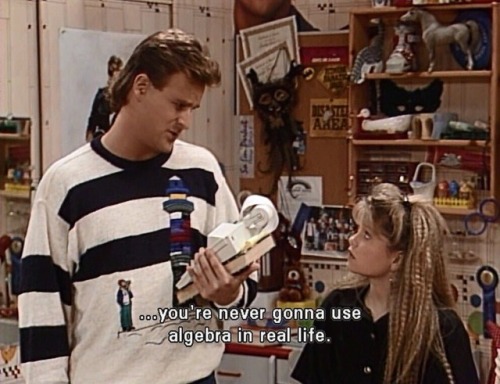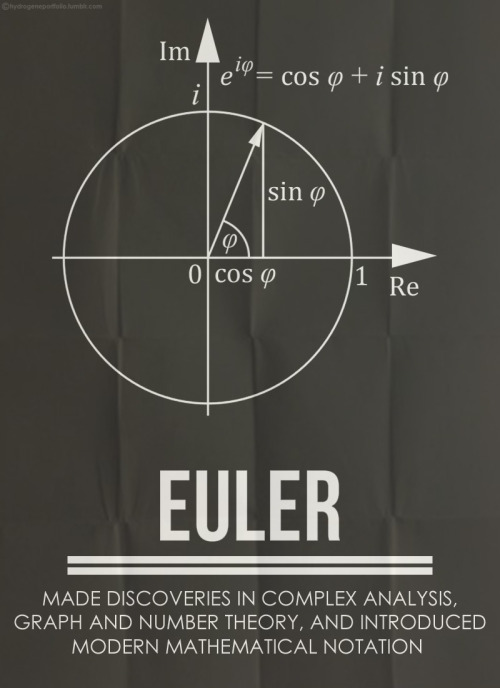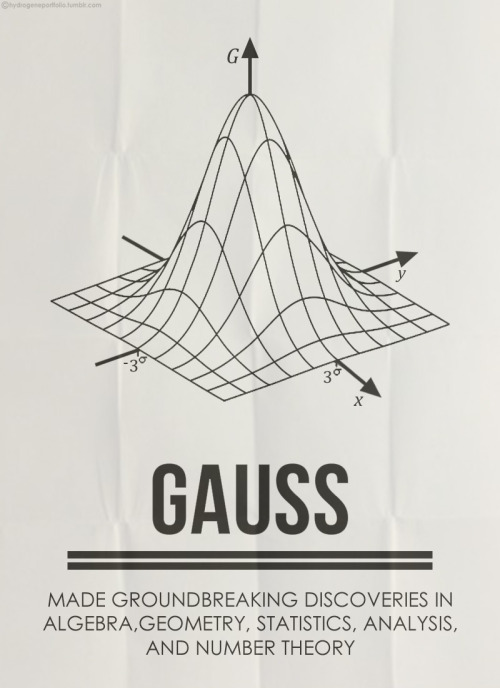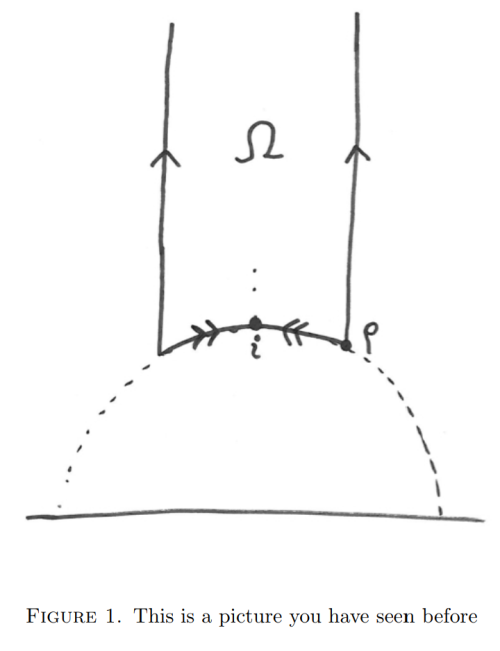#algebra
i wonder what it’s like, psychologically, to be a humanities academic. i feel like…in STEM, theres a clear understanding that even if youre not working on something with practical applications, pure STEM definitely leads to practical applications *sometimes*, often enough that society as a whole maybe net-benefits, on a material level, from funding it. but if youre studying literature or history or whatever, its just…fun? like thats the point of it. its fun. which isnt bad ofc. fun things are good! but i guess i would feel like i was…idk, getting away with something, something illicit
@youzichasaid:
When was the last time pure math led to society-benefitting practical applications though? I feel the whole field is coasting on its achievements from the 19th century and earlier…
hmm, yeah i mean thats a fair point, im not sure how much of that is like, an actual move towards less practical pure math and how much is that like. new modern engineering is based on really abstruse physics and maybe therefore based on obscure math? idk. lcd’s or something
the whole “pure math has no practical applications” discourse was ruined by RSA and later variations on public-key cryptography, now pure math is economically and technologically crucial. ghastly
Was it really though? The original RSA papersays
The Underlying Mathematics
We demonstrate the correctness of the deciphering algorithm using an identity due to Euler and Fermat
which was proved in 1640…
Like, maybe there’s somecontribution from 20th century math in e.g. factoring algorithms, but I definitely don’t get the feeling this connects significantly with the very fancy topics studied in modern math.
Far be it from me to taint pure math by associating it with practical applications
Actually, no, close be it to me. That first line is totally how I thought in undergrad and it’s stupid and it fucked me up. I’d be happier now if I hadn’t fallen to the cult of purity that happens in a lot of math undergrads.
But anyway, sure, you can build RSA specifically with older tools. But modern cryptography as it’s actually practiced depends on a lot of more modern stuff.
The best general attack on RSA is Pollard’s general number field sieve, which dates to between 1988 and 1990. It supplanted the quadratic sieve, which is from about 1981.
Because the general number field sieve is so good, we mostly don’t actually use RSA any more. Instead, we use elliptic curve cryptography. Elliptic curves have been a thing more or less since the mid-1800s, but the group law was first formlized in 1901, and a ton more development of the ideas was necessary before we could have built the encryption scheme.
In particular, elliptic curve cryptography depends on studying elliptic curves over finite fields, not over the rationals as they originally were. Understanding the security requires the Hasse bound which is from 1936. The whole setup is fundamentally a mid-20th-century approach.
But we’re currently in the process of trying to replace elliptic curve cryptography with more modern methods. This is driven by the threat of quantum computers employing Shor’s algorithm (1994) for factoring large numbers on a quantum computer.
To build post-quantum cryptography, we’re largely using lattice-based methods. This involves the study of lattices and rings, which are all fundamentally modern mathematics. The Learning with Errors scheme comes from 2005; it’s been updated to Ring Learning with Errors. Gentry introduced a homomorphic encryption scheme in 2009, which also fundamentally depends on modern mathematical ideas. (The word “homomorphism” itself only dates to 1892!)
Toward a new geometry
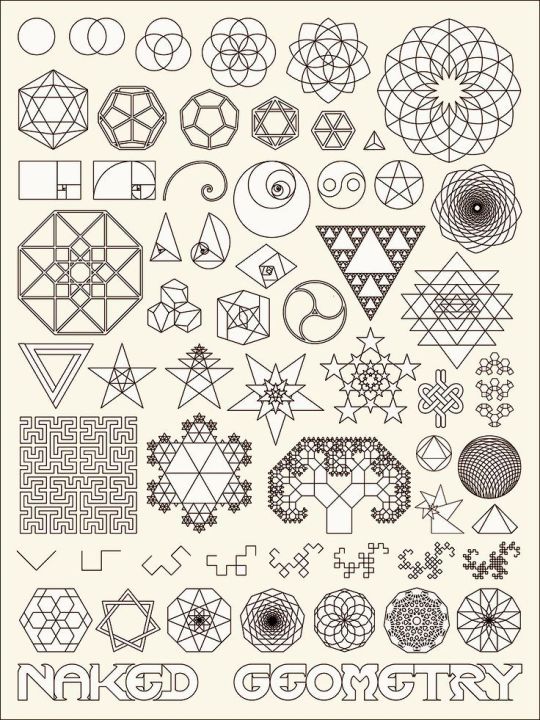
Definitions and guiding principles
- Dimension is a primitive concept which for purposes here can be defined as any linearly independent parameter or variable.
- Mathematics is most fundamentally about measurement.
- Rules of mathematics are conceptual tools developed by the human mind and are subject to change if and when such should prove necessary or utilitarian.
- Points, lines and planes are products of the human mind. Neither they nor the realities they represent have continuous existence in space or time but can recur intermittently at intervals which may be either regular or irregular. As a matter of convenience for purposes of description, however, any or all of these may be represented as existing in some continuous abstract sense.
- The whole is greater than the part and has emergent properties not found in any single part or any number of subdivisions of the whole.
- The consequences of number structure and interaction cannot be explained entirely on a local basis but emerge from holo-interactive dynamic processs throughout an entire system or any portion thereof in conceptual focus.
- It is always possible to express a reflection as a rotation and a rotation as a reflection. The two are isomorphic via properly chosen operations.
- Symmetry is of great importance but not always obvious.
- Two foundational guiding principles of reality are continuity and change. These then provide the basis and primary focus of mandalic geometry.
- Of the two types of change, cyclic and sequential, cyclic change is the more fundamental.
- Neither coordinates nor coordinate systems are a feature of nature. They are man-made devices which are pragmatic and utilitarian means by which to grasp a reality which itself has no need of them. Geometry nevertheless requires these crutches to exist and execute its functions.
- Geometry frequently also requires conventions of expression to promote widespread understanding of content but should strive to be as convention -free as possible.
- Ambiguity is a permissible feature, in fact a necessary feature, of mandalic geometry. This is related to its probabilistic nature and multiple-valued logic which reflect what we, from our limited vantage point, misunderstand to be paradoxes of nature.
Axioms
- Numbers can be characterized by dimension of context.
- A number may be embedded in multiple dimensions concurrently, existing in variant forms specific to the dimension(s) of context.
- The same number may function differently in different dimensional contexts. The dimension of context of a “point” described by a number or subsidary number delimits its expression. In other words, the expression of a number in spatiotemporal terms is determined by its dimensional context. In referring to a number or subsidiary number in any of their variants, therefore, the dimension of context must always be specified.
- It may not always be possible to identify the full dimensional context of a number. It is sufficient to determine and elucidate those contexts essential to elaboration of the specific operation(s) under present consideration.
- Numbers are not necessarily elemental. They may consist of parts or subsidiary numbers which refer to various different dimensional contexts.
- A point is not dimensionless extension in space. It is an emergent feature of the system-as-a-whole which appears intermittently at the common intersection of three or more dimensions. Points, lines and planes are evanescent occurrences in terms of geometry and spacetime. They, and the things they represent, are fleeting events which come and go. Repetition is possible (in a conceptual sense certainly; possibly in a material/energetic sense as well) but not inevitable.
Rejected definitions
- The definition of a point found in Euclid’s Elements: A point is that which has no part. [This definition may or may not have been in Euclid’s original Elements.]
- The definition of a line found in Euclid’s Elements: A line is breadthless length.
- The definition of a surface found in Euclid’s Elements: A surface is that which has length and breadth only.
Rejected axioms
- The real numbers are order-isomorphic to the linear continuum of geometry. In other words, the axiom states that there is a one to one correspondence between real numbers and points on a line. This has been described as the Cantor–Dedekind axiom. The Cartesian coordinate system implicitly assumes this axiom which then becomes the cornerstone of analytic geometry.
Rejected notions
- Things which coincide with one another equal one another. [Euclid’s Common notion 4]
Also important to note:
- Euclid’s first postulate states that any two points can be joined by a straight line segment. It does not say that there is only one such line; it merely says that a straight line can be drawn between any two points.
Image credit: James Gyre-Naked Geometry
© 2016 Martin Hauser
Please note: The content and/or format of this post may not be in finalized form. Reblog as a TEXT post will contain this caveat alerting readers to refer to the current version in the source blog. A LINK post will itself do the same. :)
Scroll to bottom for links to Previous / Next pages (if existent). This blog builds on what came before so the best way to follow it is chronologically. Tumblr doesn’t make that easy to do. Since the most recent page is reckoned as Page 1 the number of the actual Page 1 continually changes as new posts are added. To determine the number currently needed to locate Page 1 go to the most recent post which is here. The current total number of pages in the blog will be found at the bottom. The true Page 1 can be reached by changing the web address mandalicgeometry.tumblr.com to mandalicgeometry.tumblr.com/page/x, exchanging my current page number for x and entering. To find a different true page(p) subtract p from x+1 to get the number(n) to use. Place n in the URL instead of x (mandalicgeometry.tumblr.com/page/n) where
n = x + 1 - p. :)
-Page 314-
Beyond the Enlightenment Rationalists:
From imaginary to probable numbers - I

Imaginary numbers arose in the history of mathematics as a result of misunderstanding the dimensional character of numbers. There was a failure to acknowledge that numbers exist in a context of dimension. This has earlier been addressed at length.[1] Simply put, numbers exist always in a particular dimensional context. Square numbers pertain to a context of two dimensions and therefore to a plane, not a line. Square roots then ought justly reference a two-dimensional geometrical context rather than the linear one mathematics has maintained ever since mathematicians of the Age of Enlightenment decreed it so. Square roots contrary to the way mathematics would have it can neither exist in nor be found in any single line segment, because they do not originate in the number line but in the two-dimensional square.
Algebra, not geometry, provided the breeding ground for imaginary numbers. They were given a geometric interpretation as an afterthought only, long after the fact of their invention. Rationalist algebraists, feeling compelled to give meaning to equations of the form b2 = -4 came up with the fantastic notion of imaginary numbers. Only indirectly did these grow out of nature, by way of minds of men obsessed with reason.[2]
Descartes knew of the recently introduced square roots of negative numbers. He thought them preposterous and was first to refer to the new numbers by the mocking name imaginary, a label which stuck and which continues to inform posterity of the exact manner in which he viewed the oddities. It is one of the ironies of history that when at last a geometrical interpretation of square root of negative numbers was offered it involved swallowing up Descartes’ own y-axis. Poetic justice? Or ultimate folly?
Had the essential dimensional nature of numbers been recognized there would have been no need to inquire what the square root of -1 was. It would have been clear that there was no square root of -1 nor any need for such as +1 also has no square root. As linear numbers, neither -1 nor +1 can legitimately be said to have a square root. Both, though, have two-dimensional analogues and these do have square roots, not recognized as such unfortunately by the mathematics hegemony.[3]
In the next post we will look at a comparison between imaginary numbers, which were formulated in accordance with this misconstrual about how numbers relate to dimensions, and probable numbers which grow organically out of a consideration of how numbers and dimensions actually relate to one another in nature.[4] The first of these approaches can be thought of as rational planning by a central authority; the second, as the holistic manner in which nature attends to everything, all at once, and without rational forethought.
(continuedhere)
Image: A drawing of the first four dimensions. On the left is zero dimensions (a point) and on the right is four dimensions (A tesseract). There is an axis and labels on the right and which level of dimensions it is on the bottom. The arrows alongside the shapes indicate the direction of extrusion. By NerdBoy1392 (Own work) [CC BY-SA 3.0orGFDL],via Wikimedia Commons
Notes
[1] See the series of about nine posts that begins here.
[2] The Rationalists missed here a golden opportunity to relate number and dimension by defining square root much too narrowly. They seem to have been so mesmerized by their algebraic equations that they failed to pursue the search into deeper significance pertaining to essential linkages between dimension and number that intuition and imagination might have bestowed.
[3] As Shakespeare correctly pointed out, a rose by any name would smell as sweet. Plus one times plus one certainly equals plus one but that has nothing to do with actual square root really, just with algebraic linear multiplication. Note has often been made in these pages of the difference between mathematical truth and scientific truth. Whereas mathematics demands only adherence to its axioms and consistency, science requires empirical proof. Mathematics defined square root in a certain manner centuries ago, and has since been devoutly consistent in its adherence to that definition. In so doing it has preserved a cherished doctrine of mathematical truth, as though in formaldehyde. It has also for many centuries contrived to be consistently scientifically incorrect. The problem lies in the fact it has converted physicists and near everyone else to its own insular worldview.
[4] For an early discussion of the probable plane, potential dimensions, and probable numbers see here.
© 2016 Martin Hauser
Please note: The content and/or format of this post may not be in finalized form. Reblog as a TEXT post will contain this caveat alerting readers to refer to the current version in the source blog. A LINK post will itself do the same. :)
Scroll to bottom for links to Previous / Next pages (if existent). This blog builds on what came before so the best way to follow it is chronologically. Tumblr doesn’t make that easy to do. Since the most recent page is reckoned as Page 1 the number of the actual Page 1 continually changes as new posts are added. To determine the number currently needed to locate Page 1 go to the most recent post which is here. The current total number of pages in the blog will be found at the bottom. The true Page 1 can be reached by changing the web address mandalicgeometry.tumblr.com to mandalicgeometry.tumblr.com/page/x, exchanging my current page number for x and entering. To find a different true page(p) subtract p from x+1 to get the number(n) to use. Place n in the URL instead of x (mandalicgeometry.tumblr.com/page/n) where
n = x + 1 - p. :)
-Page 306-
Mandalic geometry, Cartesian coordinates and Boolean algebra: Relationships - I

(continued from here)
In attempting to understand the logic of the I Ching it is important to know the differences between ordinary algebra and Boolean algebra and how Boolean algebra is related to the binary number system.[1]
In mathematics and mathematical logic, Boolean algebra is the branch of algebra in which the values of the variables are the truth values true and false, usually denoted
1 and 0 respectively. Instead of elementary algebra where the values of the variables are numbers, and the main operations are addition and multiplication, the main
operations of Boolean algebra are the conjunctionand, denoted ∧, the disjunctionor, denoted ∨, and the negationnot, denoted ¬. It is thus a formalism for describing logical relations in the same way that ordinary algebra describes
numeric relations. [Wikipedia]
Whereas in elementary algebra expressions denote mainly numbers, in Boolean algebra they denote the truth values false and true. These values are represented with the bits (or binary digits), namely 0 and 1. They do not behave like the integers 0 and 1, for which
1 + 1 = 2, but may be identified with the elements of the two-element field GF(2), that is, integer arithmetic modulo 2, for which 1 + 1 = 0. Addition and multiplication then play the Boolean roles of XOR (exclusive-or) and AND (conjunction) respectively, with disjunction x∨y (inclusive-or) definable as x + y + xy. [Wikipedia][2]
Mandalic logic already occurs fully in the structure and manner of divinatory practice of the I Ching, if some of it only implicitly. Although mandalic geometry does not originate from either Boolean algebra or the Cartesian coordinate system but from the primal I Ching which predates them by millennia, it does combine and augment aspects of both of these conceptual systems. It extends Boole’s system of symbolic logic to include an additional logic value represented by the number -1. This necessitates modification of some of Boole’s postulates and rules, and increases their total number through introduction of some new ones. The hexagrams or native six-dimensional mandalic coordinates of the I Ching are related to Cartesian triads composed of the numbers -1, 0, and 1, making these two geometric systems commensurate by means of composite dimension, a 6D/3D hybridization or mandalic coordination of structure and function (or space and time).[3]
The introduction of composite dimension produces four distinct dimensional amplitudes and is solely responsible for the mandalic form. For anyone reading this who might be down on sacred geometry, itself a subject which I respect and admire, let it be known that I am talking here about genuine mathematics and symbolic logic, and my suspicion is that there is some genuine physics involved as well.
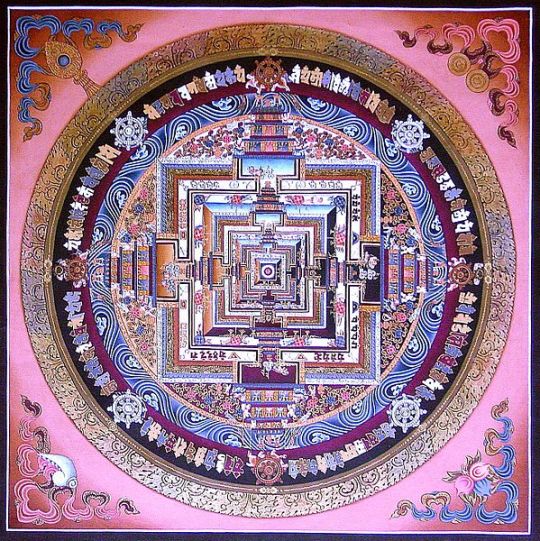
The mandalic number system, then, is a quasi-modular number system, different from Leibniz’s binary number system which is fully modular. Boole’s rule 1 AND 1 = 1 still holds true in mandalic logic. However we must add to this the new logic rule that -1 AND -1 = -1. Individually the two rules are modular, based on a clock arithmetic using a modulo-3 number system rather than Leibniz’s modulo-2 or binary number system, but with yet another added twist.
Together the two rules prescribe a compound system, one which is not singly modular but doubly modular. The two components, yinandyang, are complementary and are inversely related to one another in this unified system. This logic organization appears based on the figure 8 or sine wave and its negative, allowing for periodicity, for recursive periods of interminably repeating duration, and, perhaps most importantly, for wave interference, of constructive and destructive varieties. These two geometric figures also engender an unexpected decussation of dimension not recognized by Western mathematics. This is so because 1 AND -1 = 0 and -1 AND 1 = 0. The surprise here is that there are two distinct zeros: 0a and 0b.[4] In two- or three-dimensional Cartesian terms there exists no difference between these two zeros. However, in terms of 6-dimensional aspects of mandalic geometry and the hexagrams of the I Ching, the two are clearly distinct structurally and functionally.[5]
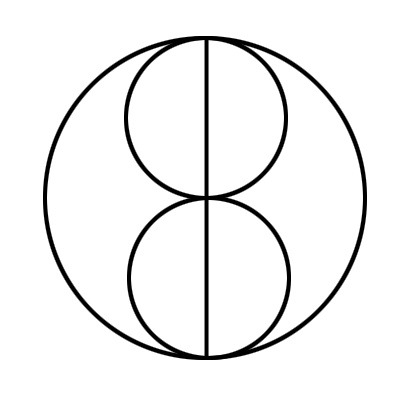
This arithmetic system is the basis of the logic encoded in the hexagrams of the I Ching. Each hexagram uniquely references a single 6- dimensional discretized point, of which there are 64 total. These 64 6- dimensional points of the mandalic cube are distributed among the 27 discretized points of the ordinary 3-dimensional cube through the compositing of dimensions in such manner that a mandala is formed which positions 1, 2, 4 or 8 hexagrams at each 3-dimensional point according to the dimensional amplitude of the particular point. This necessarily creates a concurrent probability distribution of hexagrams through each of the three Cartesian dimensions.
TheI Chinguses a dual or composite three-valued logic system. In place of truth values, the variables used are yin, yang and the two in conjunction. These fundamentally represent vector directions. Yin is represented by -1, yang by 1, and their conjunction, using Cartesian or Western number terminology, by zero (0). This symbol does not occur natively in the I Ching though where the representation used is simply a combination of yin and yang symbols, most often in form of a bigram containing both and regarded as representing a composite dimension, namely 0[1] or 0[2].[6]
The two bigrams that satisfy the requirement are
young yang

for 0[1]
and
young yin

for 0[2].
Although mandalic logic is in Cartesian terms a 3-valued system, in native terms it is 4-valued. It is not a simple modulo-3 or modulo-4 number system, but two interrelated modulo-3 systems combined. The best way to think about this geometric arrangement is possibly to view it as a single composite dimension having four distinct vector directions: a negative direction represented by mandalic composite yin (Cartesian -1); positive direction represented by mandalic composite yang (Cartesian 1); and two decussating relatively undifferentiated directions in some sort of equilibrium, represented by mandalic 0[1] (composite yin/yang) and 0[2] (composite yang/yin). both of which devolve to Cartesian 0 (balanced vector direction of the origin or center).[7]
So we’ve seen that the number system used in the I Ching is not binary as Leibniz believed but instead doubly trinary with the two halves, in simplest terms, inversely related and intertwined. Still, it was an easy mistake to make because the notation used is binary. We’ve seen too that all trigrams and hexagrams in the system can be rendered commensurate with the Cartesian coordinate system: trigrams by simple transliteration, hexagrams by dimensional compositing. What, then, of George Boole and his eponymous logic? How do they fit in the logic scheme of the I Ching? I’m glad you asked. Stay tuned to find out.
(continuedhere)
Images: Upper: TRANSFORMATION OF THE SYMBOL OF YIN (LINE split in two) AND YANG (STRAIGHT-LINE). BLEND: 4 bigrams, THEN 8 trigrams. (MORAN, E. ET AL. 2002: 77). Found here. Lower: Modified from an animation showing how the taijitu (yin-yang diagram) may be drawn using circles, then erasing half of each of the smaller circles. O'Dea at WikiCommons [CC BY-SA 3.0orGFDL],via Wikimedia Commons
Notes
[1] Boole’s algebra predated the modern developmentsinabstract algebra and mathematical logic but is seen as connected to the origins of both fields. Similarly to elementary algebra, the pure equational part of the theory can be formulated without regard to explicit values for the variables.
[2] If you are new to Boolean algebra these definitions may be confusing because in some ways they seem to fly in the face of ordinary algebra. I’ll admit, I find them somewhat daunting. Let me see if I can clarify the three examples given in this quote. Those of you more familiar with the language of Boolean algebra might kindly correct me in the event I err. I’m growing more comfortable with being wrong at times. And this is after all a work in progress.
Boolean XOR (exclusive-or) allows that a statement of the form (x XOR y) is TRUE
if either x or y is TRUE but FALSE if both are TRUE or if both are FALSE. Since Boolean algebra uses binary numbers and represents TRUE by 1, FALSE by 0, then
for x = TRUE, y = TRUE x + y = 1 + 1 = 0 , so FALSE
for x = FALSE, y = FALSE x + y = 0 + 0 = 0 , so FALSE
for x = TRUE, y = FALSE x + y = 1 + 0 = 1 , so TRUE
for x = FALSE, y = TRUE x + y = 0 + 1 = 1 , so TRUEBoolean AND (conjunction) allows that a statement of the form (x AND y) is TRUE
only if both x is TRUE and y is TRUE. If either x or y is FALSE or both are FALSE
then x AND y is FALSE. Here algebraic multiplication of binary 1s and 0s plays the
role of Boolean AND. (Incidentally, binary multiplication works exactly the same
way as algebraic multiplication. There’s a gift!)
for x = TRUE, y = TRUE xy = 1(1) = 1, so TRUE
for x = FALSE, y = FALSE xy = 0(0) = 0, so FALSE
for x = TRUE, y = FALSE xy = 1(0) = 0 , so FALSE
for x = FALSE, y = TRUE xy = 0(1) = 0 , so FALSEBoolean OR (inclusive-or) is the truth-functional operator of (inclusive) disjunction,
also known as alternation. The OR of a set of operands is true if and only if one or
more of its operands is true. The logical connective that represents this operator is
generally written as ∨ or +. As stated in the Wikipedia article logical disjunction x∨y
(inclusive-or) is definable as x + y + xy [(x OR y) OR (x AND y)] as shown below.
[Note: x AND y is often written xy in Boolean algebra. So watch out whichalgebra
is being referred to, ordinary or Boolean. Are we confused yet?]
for x = TRUE, y = TRUE x + y = 1 , xy = 1 , so TRUE
for x = FALSE, y = FALSE x + y = 0 , xy = 0 , so FALSE
for x = TRUE, y = FALSE x + y = 1 , xy = 0 , so TRUE
for x = FALSE, y = TRUE x + y = 1 , xy = 0 , so TRUE
[3] Fundamentally, though, the coordinates of mandalic geometry refer to vector directions alone, rather than to both vectors and scalars (or direction and magnitude) as do Cartesian coordinates. Yin specifies actually the entire domain of negative numbers rather than just the scalar value -1. Yang similarly refers to the entire domain of positive numbers rather than the scalar value 1 alone. Their conjunction through the compositing of dimensions, though represented by the symbol zero (0) in the format commensurate with Cartesian coordinates, refers actually to a state or condition not found in Western thought outside of certain forms of mysticism and other outsider philosophies like alchemy; equilibration of forces in physics; equilibrium reactions in chemistry; and the kindred concept of homeostasis mechanisms of living organisms found in biology.
[4] This is to Westerners counterintuitive. Our customary logic and arithmetic allows for but a single zero. That two different zeros might exist concurrently or consecutively is - to our minds - irrational and we wrestle mightily with the idea. To complicate matters still more, neither of these zeros is conveniently like our familiar Western zero. So which should win out here? Rationality or reality? In fact, the decision is not ours. In the end nature decides. Nature always decides. It stuffs the ballot box and casts the deciding vote much to our chagrin, leaving us powerless to contradict what we may interpret as a whim. Our votes count for bupkis.
[5] This calls to mind also the Möbius strip which involves a twist that looks very much like a decussation to me. The decussation or twist in space we are talking about here though has a sort of wormhole at its center that connects two contiguous dimensional amplitudes. I can’t say more about this just now. I need to think on it still. It seems a promising subject for reflection. (1,2,3)
[6] It needs to be pointed out here that in mandalic geometry, and similarly in the primal I Ching as well, a bigram can be formed from any two related Lines of hexagrams, trigrams, and tetragrams. The two Lines need not be (and often are not) adjacent to one another. I would think such versatility might well prove useful for modeling and mapping quantum states and interactions.
[7] Note that yin and yang in composite dimension can each take the absolute values 0, 1, and 2 but when yin has absolute value 2, yang has absolute value 0; when yang has absolute value 2, yin has absolute value 0. This inverse relation in fact is what makes the arrangement here a superimposed, actually interwoven, dual modulo-3 number system. It also makes the center points of mandalic lines,squares, and cubes more protean and less differentiated than their vertices and elicits the different amplitudes of dimension.
The composite dimension value at the origin points(centers) of all of these geometric figures is always zero in Cartesian terms since the values of the differing Lines in the two entangled 6-dimensional hexagrams located here add to zero. But neither of these 6-dimensional entities is in its ground state at the center. Both have absolute value 1 at Cartesian 0. Let me say that again: composite dimension values at the center or origin are zero in Cartesian terms but the values of both individual constituents are non-zero.Yin is in its ground state when yang is at its maximum and vice versa. At the center, since the two are equal and opposite they interfere destructively. This results in a composite zero ground state.
So from the perspective of Cartesian coordinate dynamics, which is after all the customary perspective in our subjective lives, we encounter only emptiness. But it is this very emptiness that opens to a new dimension. In the hybrid 6D/3D mandalic cube only line centers and the cube center have direct access through change of one dimension to face centers and only the face centers have a similar direct access through a single dimension to the cube center and edge centers. All coexist in an ongoing harmony of tensegrity. There is method to all this madness then.
© 2016 Martin Hauser
Please note: The content and/or format of this post may not be in finalized form. Reblog as a TEXT post will contain this caveat alerting readers to refer to the current version in the source blog. A LINK post will itself do the same. :)
Scroll to bottom for links to Previous / Next pages (if existent). This blog builds on what came before so the best way to follow it is chronologically. Tumblr doesn’t make that easy to do. Since the most recent page is reckoned as Page 1 the number of the actual Page 1 continually changes as new posts are added. To determine the number currently needed to locate Page 1 go to the most recent post which is here. The current total number of pages in the blog will be found at the bottom. The true Page 1 can be reached by changing the web address mandalicgeometry.tumblr.com to mandalicgeometry.tumblr.com/page/x, exchanging my current page number for x and entering. To find a different true page(p) subtract p from x+1 to get the number(n) to use. Place n in the URL instead of x (mandalicgeometry.tumblr.com/page/n) where
n = x + 1 - p. :)
-Page 302-
Beyond the Enlightenment Rationalists:
From imaginary to probable numbers - I

Imaginary numbers arose in the history of mathematics as a result of misunderstanding the dimensional character of numbers. There was a failure to acknowledge that numbers exist in a context of dimension. This has earlier been addressed at length.[1] Simply put, numbers exist always in a particular dimensional context. Square numbers pertain to a context of two dimensions and therefore to a plane, not a line. Square roots then ought justly reference a two-dimensional geometrical context rather than the linear one mathematics has maintained ever since mathematicians of the Age of Enlightenment decreed it so. Square roots contrary to the way mathematics would have it can neither exist in nor be found in any single line segment, because they do not originate in the number line but in the two-dimensional square.
Algebra, not geometry, provided the breeding ground for imaginary numbers. They were given a geometric interpretation as an afterthought only, long after the fact of their invention. Rationalist algebraists, feeling compelled to give meaning to equations of the form b2 = -4 came up with the fantastic notion of imaginary numbers. Only indirectly did these grow out of nature, by way of minds of men obsessed with reason.[2]
Descartes knew of the recently introduced square roots of negative numbers. He thought them preposterous and was first to refer to the new numbers by the mocking name imaginary, a label which stuck and which continues to inform posterity of the exact manner in which he viewed the oddities. It is one of the ironies of history that when at last a geometrical interpretation of square root of negative numbers was offered it involved swallowing up Descartes’ own y-axis. Poetic justice? Or ultimate folly?
Had the essential dimensional nature of numbers been recognized there would have been no need to inquire what the square root of -1 was. It would have been clear that there was no square root of -1 nor any need for such as +1 also has no square root. As linear numbers, neither -1 nor +1 can legitimately be said to have a square root. Both, though, have two-dimensional analogues and these do have square roots, not recognized as such unfortunately by the mathematics hegemony.[3]
In the next post we will look at a comparison between imaginary numbers, which were formulated in accordance with this misconstrual about how numbers relate to dimensions, and probable numbers which grow organically out of a consideration of how numbers and dimensions actually relate to one another in nature.[4] The first of these approaches can be thought of as rational planning by a central authority; the second, as the holistic manner in which nature attends to everything, all at once, and without rational forethought.
(continuedhere)
Image: A drawing of the first four dimensions. On the left is zero dimensions (a point) and on the right is four dimensions (A tesseract). There is an axis and labels on the right and which level of dimensions it is on the bottom. The arrows alongside the shapes indicate the direction of extrusion. By NerdBoy1392 (Own work) [CC BY-SA 3.0orGFDL],via Wikimedia Commons
Notes
[1] See the series of about nine posts that begins here.
[2] The Rationalists missed here a golden opportunity to relate number and dimension by defining square root much too narrowly. They seem to have been so mesmerized by their algebraic equations that they failed to pursue the search into deeper significance pertaining to essential linkages between dimension and number that intuition and imagination might have bestowed.
[3] As Shakespeare correctly pointed out, a rose by any name would smell as sweet. Plus one times plus one certainly equals plus one but that has nothing to do with actual square root really, just with algebraic linear multiplication. Note has often been made in these pages of the difference between mathematical truth and scientific truth. Whereas mathematics demands only adherence to its axioms and consistency, science requires empirical proof. Mathematics defined square root in a certain manner centuries ago, and has since been devoutly consistent in its adherence to that definition. In so doing it has preserved a cherished doctrine of mathematical truth, as though in formaldehyde. It has also for many centuries contrived to be consistently scientifically incorrect. The problem lies in the fact it has converted physicists and near everyone else to its own insular worldview.
[4] For an early discussion of the probable plane, potential dimensions, and probable numbers see here.
© 2016 Martin Hauser
Please note: The content and/or format of this post may not be in finalized form. Reblog as a TEXT post will contain this caveat alerting readers to refer to the current version in the source blog. A LINK post will itself do the same. :)
Scroll to bottom for links to Previous / Next pages (if existent). This blog builds on what came before so the best way to follow it is chronologically. Tumblr doesn’t make that easy to do. Since the most recent page is reckoned as Page 1 the number of the actual Page 1 continually changes as new posts are added. To determine the number currently needed to locate Page 1 go to the most recent post which is here. The current total number of pages in the blog will be found at the bottom. The true Page 1 can be reached by changing the web address mandalicgeometry.tumblr.com to mandalicgeometry.tumblr.com/page/x, exchanging my current page number for x and entering. To find a different true page(p) subtract p from x+1 to get the number(n) to use. Place n in the URL instead of x (mandalicgeometry.tumblr.com/page/n) where
n = x + 1 - p. :)
-Page 306-
IN SCHOOL:

IN THE REAL WORLD:

somewhat semi-inactive on this blog because of college app season :”) anyways, I have a big math test tomorrow and boy am i not ready
Post link
studying for that first math quiz
pro-tip: i gain most of my understanding of the course content through class lectures, but please read the textbook! it may be a bit boring because you’ve learned most of the content, but there’s always tiny details here and there you didn’t know of or didn’t learn in class. you don’t have to spend too much time on it, but it’s a great refresher in providing a second perspective in addition to your teacher/professor.
Post link
so currently not highlighting any of my notes because they bleed through this kind of graphing paper orz… does anyone recommend any highlighters that don’t bleed?
Post link
Algebra
Algebra- “The reunion of broken parts” (ar.)
From Arabic al jabr “reunion of broken parts.”
X just wants to be reunited with Y. Can you help them? Math: the great love story.
Post link

yes please
if x^2+y^2=20 is a circle at which point will the abscissa will be 2?

If you’re an avid minecraft player, you probably know about how useful the nether dimension can be. If you have somewhere far across the overworld you need to get to, you can considerably shorten the distance by taking a trip through the nether. Some players will even have a network of portals corresponding to every important place in their world!
How does one go about planning the locations of all these portals? Let’s take a closer look at how they work, and how we can visualize them as a mathematical function relating overworld coordinates to nether coordinates, and vice-versa.
The basics
The reason nether travel is so efficient is because, in effect, distances traveled in the nether are shorter than distances in the overworld. The exact scale is a factor of 8: in other words, for every block you travel in the nether, you travel 8 blocks in the overworld.
This simple principle is what lets you jump between nearby portals in the nether to quickly cross vast distances in the overworld.

With that information, we can figure out exactly where to place our portals so that they link up nicely. If you know the coordinates of a portal in the overworld, you should be able to figure out where that portal ought to come out in the nether. This is where the mathematical concept of a linear map helps us visualize the situation.
What in the world is a linear map?
A map, or mapping, in mathematics is simply another word for a function. You’ve probably seen functions in school: they look something like f(x), and when you plug in a number x, you get a new value out. If your function is a parabola, then f(x) might give you the square of x, for example.
The truth is, a function doesn’t just need to use numbers. You can put anything you want into a function and get something out, as long as it makes sense. For example, you could have a function that takes a point in the overworld and converts it to a point in the nether. Isn’t that exactly what a nether portal does? You build it somewhere in the overworld, and then it automatically builds a new one at the corresponding point in the nether.
Let’s imagine our hypothetical mapping that takes a point in the overworld and converts it into a point in the nether. You can take any coordinate in the overworld, and it will correspond to some unique point in the nether, and vice versa. The “linear” part describes what kind of mapping we have. The important thing is that it’s a pretty simple conversion: you can imagine the nether like a scaled down version of the overworld.

The black square in the nether portion of this image corresponds to the layout of the overworld that has essentially been scaled down in the nether– notice that the portals are in the same relative positions, just closer together.
If you follow the Hermitcraft series, you may have seen their clever design for a nether hub that illustrates this idea pretty well. They created a giant scale map on the floor, showing how the overworld might look at each point. I assume the scale is 1/8, and the portals on the map correspond to the locations of the portals in the overworld. This way, it’s easy to imagine striding over a world that’s 1/8 its size when you take a shortcut through the nether!

This is confusing, what does our “linear mapping” actually look like?
The way to convert between overworld and nether coordinates is actually pretty simple. Here are some functions you can use to find nether coordinates using overworld coordinates:

(The subscripts NandO show which X and Z coordinates correspond to the nether and overworld, respectively.)
This means that when you place a portal at a point X, Z in the overworld, a new portal will attempt to generate near the points X/8, Z/8 in the nether. Furthermore, a little algebra can show us how to find overworld coordinates from nether coordinates:

(As a bonus, this could be called the inverse mapping of the first one.)
I read this simple relationship on the Minecraft wiki, but I was actually a little skeptical. My portals don’t always show up at exactly the position I expect: if I place a portal at the overworld’s origin, (0,0), then my portal might actually show up some ways away from (0,0) in the nether. Is the real mapping more complicated? Should I add some kind of offset to those equations?
I decided to jump into a new world and take some empirical data. I went into the nether and started building nether portals, recording their coordinates, and seeing where they come out in the overworld. Here are some charts showing how the nether coordinates of my portals compare to their generated overworld coordinates:


These points follow a line very nicely! Notice the different scales of the axes. It turns out that each of these lines has a slope of just about 8, which is confirmed by the best fit lines (their equations are shown under the title of each chart). That’s what we expect, regardless of any potential offset– every coordinate unit in the nether is worth 8 coordinate units in the overworld.
Notice the intercept of each line. That’s the part of the equation that’s added or subtracted from our x term. They’re very small– remember we’re working in units of single blocks. An intercept of 1 or 2 blocks is pretty negligible, and the pictures confirm that each best fit line seems to intersect the origin pretty closely.
This means I was wrong about the possibility of an offset when converting between overworld and nether coordinates. Those equations posted above are exactly correct. If you build your overworld portal at a location of exactly (X,Z) then it will try to come out near (X/8, Z/8) in the nether, every time. Convenient, and quite easy to calculate!
The dirty and imprecise truth of how nether portals work
When I was collecting my empirical data for the charts, I also considered trying another experiment where I do the opposite of what I did above: build portals in the overworld, and see where they come out in the nether. Trying this method really highlighted some of the quirks of nether portals, and how they don’t cleanly follow all the rules I just laid out.
For one thing, the world of Minecraft is laid out in discrete blocks. After doing the calculations to find where a nether portal should come out, you will likely end up with decimal answers, not whole numbers. But you can’t have half of a block. In practice, our mapping can’t be one-to-one– that is, every block in the overworld can’t correspond to a unique block in the nether, because if you think about it, a few nearby blocks in the overworld might all come out into one nether block. When deciding where a portal should come out, all that Minecraft can do is choose something close.
Another wrinkle is that when the player constructs a portal and goes through it, a new one won’t be immediately generated; first, the game checks to see if there is another valid portal near where it should come out. If so, the player will come out there instead. This is how the game makes it so portals don’t have to be exactly on the corresponding coordinates in each dimension. They just have to be close enough to be linked up.
Every time the player goes through a portal, the game will find the corresponding location in the other dimension, then search around 128 blocks in both coordinates for the closest nearby portal the player can come out. A new portal will only be generated if this check fails to find a valid portal.
Remember that distances in the nether are “compressed” compared to distances in the overworld. A distance of 128 blocks in the nether corresponds to 1024 blocks in the overworld. This means if you have two portals less than 1024 blocks apart in the overworld, they can come out of the same portal in the nether. You can easily make a lot of overworld portals take you to the same nether portal. If you think of portals as the “function” that takes the player from an overworld coordinate to a nether coordinate, then this function is definitely not one-to-one!

I got to experience this phenomenon firsthand when I was collecting empirical data. I tried constructing a few overworld portals so I could record where they generate in the nether. Embarrassingly, I took data for a couple portals before I realized they were all sending me to the same place in the nether. I wasn’t moving far enough for my portals to have to generate new ones in the nether.
There was another occasion where I built an overworld portal and something interesting happened. I moved far enough that this one would have to generate a new one in the nether, but it didn’t come out quite where I expected. My overworld coordinates were clearly not exactly 8 times the nether coordinates. Then I realized I was surrounded by a lava ocean. Rather than spit me out over lava, my portal looked for a safer location to generate, on a small island of netherrack.
It actually ended up a fair bit farther away than expected. When I tried going back through my portal to the overworld, I was greeted with unfamiliar terrain. My portal in the nether was so far away from where it was “supposed” to be, it couldn’t even link up with my original overworld portal, so it had to generate a new one!
This was kind of a complicated anecdote, so here’s an illustration that may help:

This is all to say, the behavior of nether portals in practice doesn’t exactly match up with our mathematical model. The game has some clever mechanics to make sure they generate in practical locations, but these can lead to some funny situations.
The only way to avoid these problems is to do the work yourself: make some calculations and build your portals exactly where you think they should go. Remember that your nether and overworld portals will always link up to the closest ones in their corresponding dimensions, so if you do it yourself, you can make them work exactly how you want! If you want my advice, try scrawling out a table to keep track of all your important world locations.

WHY DIDNT THEY TEACH ME THAT IN SCHOOL. I HAVE AN ASSOCIATES IN SCIENCE. GODDAMN IT
I just said what over and over again, getting louder each time as I did the math in my head to see if that checks out. It does
This is a good shortcut and here’s a little visual to explain it!
Generally when you see the word “of” in a word problem, it’s implying multiplication. If you have three of something, you’re taking that something and multiplying it by three. That works for any number, even the smaller ones!
Since 8% is just shorthand for 8/100, we can write that first example like this:

That 25 can be written as a fraction too, it just has an invisible 1 in the denominator. If you remember your rules of algebra, we can smoosh those two fractions together like so:

Then we can do the same thing we just did, but in reverse. Let the 8 go off by itself. Turn it over in your head to confirm that we haven’t changed anything:

Now if you wanted to write this out, you could call it “8 of 25%” or equivalently, 25% of 8 (since multiplication is commutative– it can be done in any order).
The fun thing about multiplying fractions is you can split them up, squish them together, and generally make them look however you want to suit your purposes. And that’s exactly what this shortcut is, at its heart! I hope it comes in handy.
Post link
 ALT
ALT
x • y • (x² − y²) ÷ (x² + y²)






